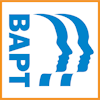(By David Hodgson, reprinted from TypeFace Winter 2017)

The two models of the world I’ve found most useful in my personal and working life are personality type and NLP (Neuro Linguistic Programming). Both help people be better at being people. In my session at the BAPT Conference I’d like to share some of the ways I’ve applied the best of both models to help a huge range of people, from school children aged ten to senior leaders facing redundancy, be better at understanding and thriving as their world changes. Alvin Toffler said ’Change is not merely necessary to life – it is life.’ So we must all learn to change. We must also know from where we are starting and to where we are going. Type and NLP are an ideal pair of shoes to help us mark and walk our path.
It’s scary how good Type is at helping us understand who we are, predict how we will behave, which job tasks we’ll love and what sort of arguments we’ll have with our family. It’s less good at showing us how to change. Parts of NLP can. When we blend the two approaches synergy can occur.
At successive parents’ evenings teachers told me that my ‘I’ preference daughter should learn to speak up and contribute more in class. I was told with equal enthusiasm that my ‘E’ preference son needed to learn to calm down, listen and give other children a chance to contribute before ‘showing off’. This was well-intentioned advice. The teacher identified a useful what to do but not a how to do it. Being aware of our behaviour (through preferences) and having the skill to adapt to suit prevailing circumstances is undoubtedly crucial to success in the classroom.
In my experience the Type model is unsurpassed as a way to explore what across the key elements (eight preferences) of being human. Equally, I’ve found NLP to be a fantastic model for learning behavioural flexibility allowing all children to apply the best of E and I in class and beyond. We can also ensure children and adults can change and choose the best of all eight preferences. I will show how we can model the best of E and I preferences to control our energy for greater inner and outer confidence.
I believe Carl Jung would have liked much of the NLP approach to understanding the unconscious patterns that drive our behaviour, collectively and individually, and I look forward to exploring these themes at Conference.
At a recent training event I listened to a speaker as she shared the following Zen saying: A finger is useful to point at the moon, the wise look at the moon, the ignorant at the finger. She explained that the symbol points the way to a greater reality but is not to be confused with the reality. This could be a metaphor for both type and NLP. Much of the criticism of both models is people thinking we claim the models are the moon when they are fingers.
One way type does allow us to explore behavioural shifts is through the zig-zag problem solving model, where we encourage individuals or groups to move between S N and F T functions. I will show people how to move between E and I preferences to help boost confidence, charisma and resilience. When the individual finally integrates the conflict a broadening of the personality occurs. This on-going expansion combined with the development of the individual personality is a natural process that Jung called individuation.


David Hodgson is an author and trainer working with teachers and students across the UK and abroad. He brings personality type into education via his popular books (The Buzz, Personality in the Classroom) and motivational workshops in schools, Universities and other organisations. He is passionate about type and sharing its power to change and inspire, especially young people and those who work with them.
Email: buzz.hodgson@gmail.com

